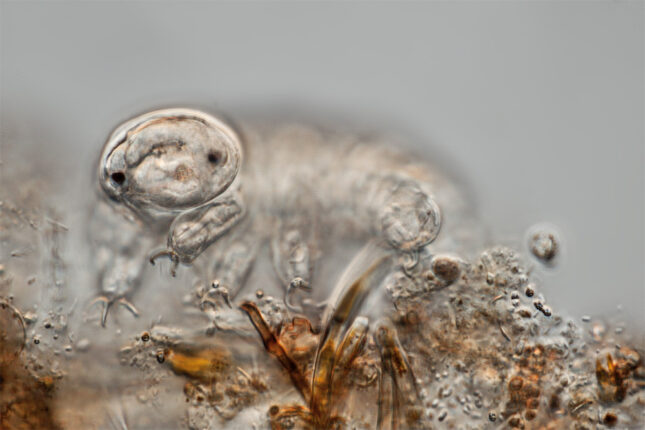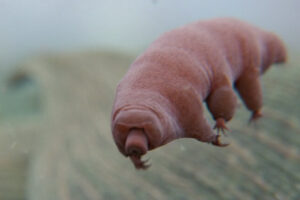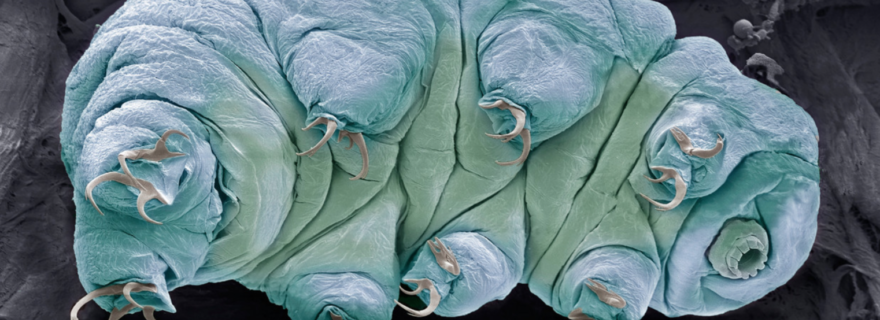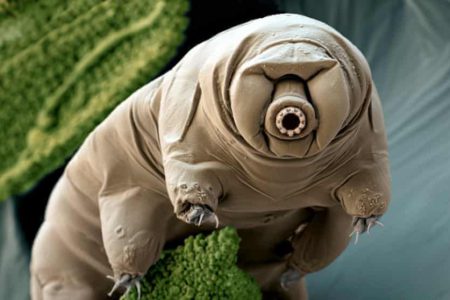A tardigrade odyssey
Leiden Science Magazine is interlarded with tardigrades. How did that came to be? A short essay about this curious creature.
As a reader of the Leiden Science Magazine you might have wondered already, where does our obsession with the tardigrade come from? This special animal makes a presence in our articles, countless of instagram and twitter posts, and is reading a magazine in our logo (made by one of our editors, Linshan Feng) as we speak.
Not too long ago, during the development of the magazine in 2020/2021, he suddenly appeared on the whiteboard. There is no question that this insanely cute animal has a very large cuddliness factor. The comical view of an eight-footed miniature bear, little claws and cyclops-like suction mouth included, can fool you though. They are often described as the toughest, most resilient creature in the animal kingdom. We are not the only ones who view it this way: the internet of scientific journalism is full of similar odes to the tardigrade.
Dormant state
What makes the tardigrade interesting, can be largely attributed to a specific protein, called Dsub. This protein is made when the tardigrade is in a dormant state. During this state, it can handle large doses of radioactivity, vacuum, and extreme heat, cold or drought. On top of that, it will not get older during its dormant stage. It seems like this creature has won the evolution game and its characteristics are very interesting for all of the fields of study within our faculty.


Biologists and biomedical researchers are testing whether the Dsub protein, which protects the Tardigrade’s DNA against X-rays, can be used in humans. Bio pharmacists see the similarities between defense mechanisms of cancer cells and tardigrades, which both utilize billions of years of evolution. And those who see potential in cryogenics to be able to live forever, are amazed by resurrected tardigrades after being frozen for 30 years.
Astronomers and physicists were excited about tardigrades that survived being in space, and this spurred curiosity to see if they are also able to make far space journeys. Just recently a discussion arose whether the tardigrade was or was not in a quantum state. It seems like their unusual characteristics keep on stacking up.
Sadly, these newsworthy facts are not easy to find for the other disciplines, but we should not forget that all of these sciences use the fields where the tardigrade is less prominent, such as maths and information sciences. We did not forget about you!
Symbolic


Now it becomes clear that the tardigrade is more to us than simply a mascotte. It is a symbol of our reason of existence as a magazine, which is to connect students of all of the science faculties through science journalism.
Most discoveries and technological developments are made by an intense collaboration of multiple disciplines. Often, without one, you are unable to understand the other. Or insights about the best way to go are standard procedure in one field of study, but yet have to be introduced in another field. Because of this kind of collaboration, it becomes much easier to come up with creative solutions and you will always keep each other up-to-date.
It can be easy to become completely lost in your own subject, making you forget that you are surrounded by plenty of fellow scientists who try to reach the same goal. The study objects might differ, but we have one thing in common: The scientific method of creating knowledge. And all knowledge is interesting, whether we immediately gain from it or not. Therefore, I would always recommend staying involved with whatever is happening in other areas of science. We hope you have grown to love the tardigrade as much as we do, and will stay forever interested in the countless topics that science has to offer.






0 Comments
Add a comment